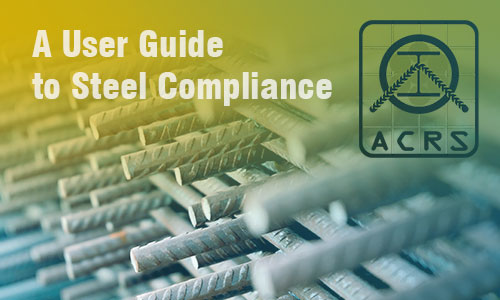News and Updates
A User Guide to Steel Compliance
13-Feb-2024
In our assessment of hundreds of steel suppliers globally, ACRS sees instances where structural steel is not manufactured in accordance with AS/NZS standards, or is not correctly tested to determine compliance with the relevant standards.
Compliance with AS/NZS standards is a legal requirement and also a safety critical one. But the thoroughness and specificity of the standards mean it is complex for an end user to be sure the product meets the standards, without expert certification.
Differing standards for differing markets
In many instances, steel product is manufactured to a local standard – for example, hollow pipes made in the U.S. might be made to American Petroleum Industry standards. But manufacturers or sellers of this product might also claim the product meets other standards, such as AS/NZS standards to sell to the Australasian market.
To attempt to demonstrate compliance with the AS/NZS standards, these products might either have a random sample tested for chemical or mechanical properties – or commonly just state that its properties meet the applicable AS/NZS standards without testing.
Even if there is testing done to AS/NZS standards with several criteria that need to be met for both the important chemical and mechanical properties, these are only part of the standard and alone don’t ensure compliance. For example, AS/NZS standards also specify how you manufacture and mark product, including with the time and year of manufacture and company name.
Understanding AS/NZS requirements
What are the other factors of compliance? Here are four key things ACRS certification verifies – so you don’t have to.
- The testing laboratory: It’s a requirement of AS/NZS structural standards that a testing laboratory must hold ILAC certification, and record its ILAC number on any issued test certificate. The lab must test steel product to standard AS 1391 for tensile testing and AS 1554.2 for impact tests (the Charpy V-notch test). They must be certified to do so.
However, in most instances end users don’t check whether the lab holds certification to test to those AS/NZS standards – or even if it holds ILAC certification. Instead, they rely on the reported test values – but these are only as good as the testing integrity.
The ACRS certification process ensures that the lab has ILAC certification, and the correct scope and tests for the standard. - The sample: The AS/NZS structural steel standards clearly state from where a sample should be taken for mechanical testing, and how that test piece should be prepared. (See Clause 9: Testing; and Clause 10: Tensile Testing, in any of the four AS/NZS structural steel standards, for specifications on the position and orientation of test pieces).
When a steel buyer runs its own mechanical properties testing, they frequently do not know where to take the sample from and how that sample should be prepared. This may make test results incorrect.
A lab, especially a third-party one, receiving a test piece does not know whether that sample was taken from the correct position/orientation or prepared correctly. It can only analyse the supplied sample and report the results.
ACRS, when certifying a mill, ensures that test pieces are taken and prepared correctly, and that the mill has the correct procedures in place on an ongoing basis to sample correctly.
It’s important to note that not all international standards require test pieces to be taken in the same position or orientation as the AS/NZS standards do. Under AS/NZS structural steel standards for example, tensile tests for elongation must be based on the cross-sectional (longitudinal) area of the test piece (Clause 9.4.1), which is not a requirement of many other international standards. This is because if you took steel from the outside edge of a hot rolled product, it would have cooled faster than steel in the middle of the product and therefore could show a higher strength than the product as a whole. AS/NZS minimum strength requirements are based on longitudinal tests. However, not all labs are aware of this requirement, and therefore the results obtained can be incorrect. - The manufacturing: Steel mills almost always manufacture specifically to their applicable local (i.e. domestic) standards. ACRS certification ensure that mills – regardless of where they are located internationally – have appropriate procedures in place to fully meet the applicable requirements of the AS/NZS standard. That might be as simple as changing how the product is identified (marked), or as complex as aligning the testing requirements and internal quality of the product.
- The quality: AS/NZS structural steel standards include clauses of manufacturing tolerances (Clause 7), and of freedom from defects (Clause 8). ACRS, when assessing a structural steel manufacturer, confirms that it complies with those clauses (and not to another standard, which may be different).
Architects, engineers, and steel specifiers, buyers, and end users must have confidence that the steel in their structures meets AS/NZS standards. That is a challenge without using a thorough independent certification body such as ACRS, to be certain that steel product complies with these standards. Even product that has been reputably certified to another country or organisation’s standard, may not be compliant with AS/NZS standards, and the testing of it differs.
A steel mill being ACRS-certified provides that certainty. Check mills’ current ACRS certificates on our website or in the ACRS Cloud app for their scope of certification, product marking and tagging. If you ever have any questions of the veracity of supplied product, don’t hesitate to contact ACRS for assistance.